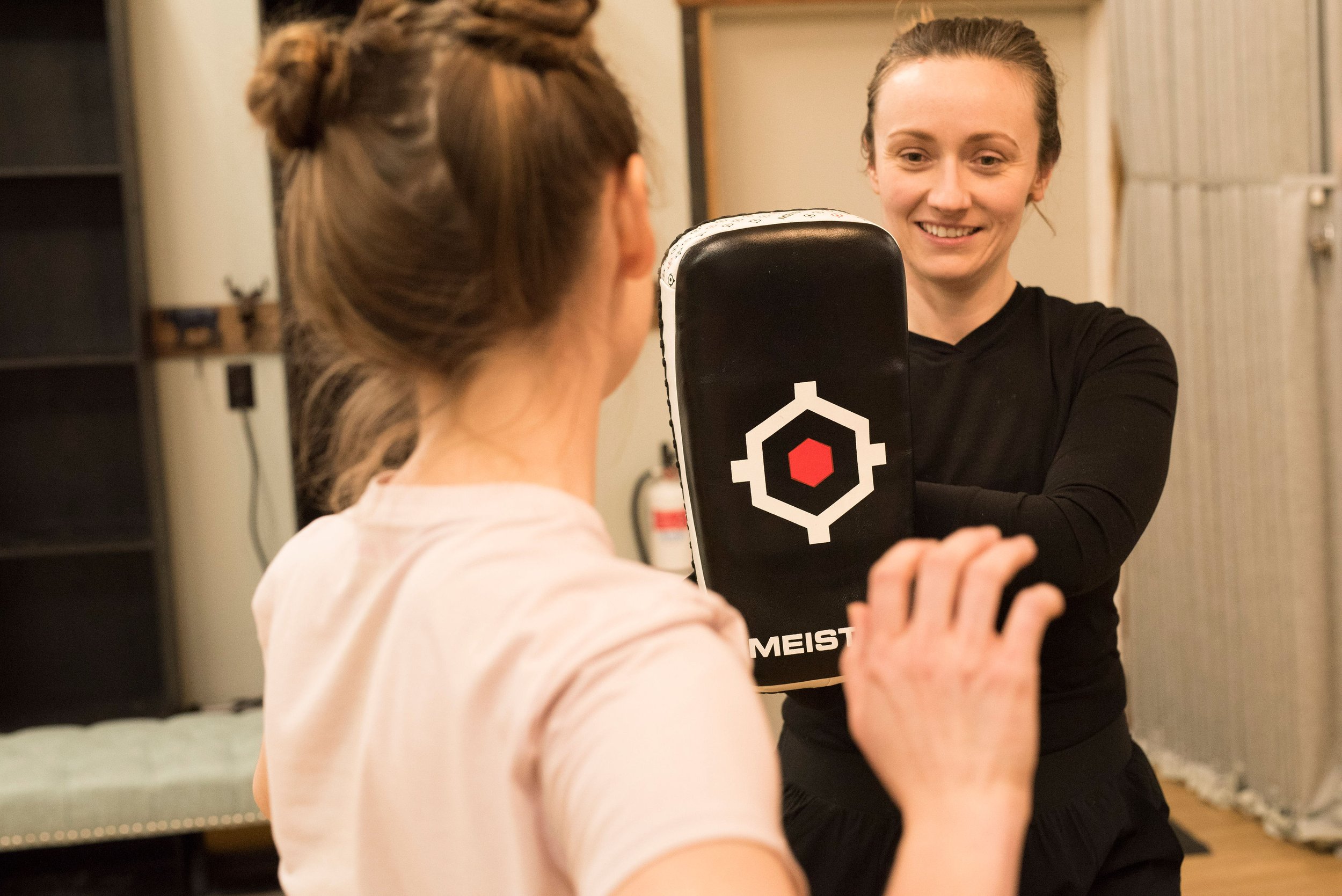Empowerment self-defense
Education, facts and statistics
“The most common way people give away their power is by thinking they don’t have any.”
Much of the work of empowerment self-defense lies in overcoming many of the myths and false perceptions about assault and self-defense. Many self-defense courses are taught with a male on male experience of assault in mind and do not necessarily reflect the reality of violence that most women face.
Empowerment self-defense classes prepare women to cope with the particular types of gender-based violence they are likely to experience. These include assaults by people they know (including intimate and familial relationships), workplace harassment, and abuse, harassment, and assault during everyday encounters.
Contrary to popular belief most assaults are not perpetrated by a stranger, but by someone the victim already knows. In 8 out of 10 assaults the victim knew their assailant beforehand. When looking at college age women (in which occurs the highest rate of sexual assault) this statistic goes up to 9 out of 10. While this is a startling statistic it makes it clear just how effective clear and firm boundary setting in everyday life can be when it comes to creating a broader experience of overall safety.
More than 85% of assaults do not start with a strike or a grab but with '“feeling out” behaviors. A conversation, a pat on the leg, hand on the shoulder or other unwanted touch all serve to test boundaries. More than 75% of these cases can be stopped with firm boundary setting through body language, tone of voice, and clear and focused use of language. This statistic demonstrates just how important it is to recognize when your boundaries are being crossed and feel confident setting a boundary before the need to physically defend yourself arises.
“The only people who get upset about you setting boundaries are the ones who were benefiting from you having none. ”
Self-defense by women for women
This approach to self-defense provides the skills that address the many types of gender-based violence directed toward women. These include immediate responses to situations of risk including boundary violations, sexual harassment and assault.
Inner Warrior
Along with physical techniques which provide an experience of their physical power women are guided to experience and trust in their inner strength and resilience in a variety of adverse situations.
In learning physical as well as mental and emotional techniques students are able to identify different sources of strength, gain confidence in their ability to direct their own lives and their experience of personal safety, dignity, and empowerment.
“When you love yourself and know your worth, what you allow looks different.”







